In this NewsFlash, we hear how a breath of bicarbonate might cut infections related to Cystic Fibrosis, discover a nano-technological solution to dangerous blood clots, and examine the astronomical mystery of the disappearing dust cloud. Plus, a new way to think about explosives and, of course, the potential discovery of the Higgs boson!
In this episode

00:24 - CF and pH – Lung Acidity in Cystic Fibrosis Increases Infection
CF and pH – Lung Acidity in Cystic Fibrosis Increases Infection
Sufferers of Cystic Fibrosis, or CF, have lower pH in their airways and this impairs their ability to kill bacteria, leading to increased infections, inflammation and ultimately damage to lung tissue.
CF is a genetic condition caused by mutations in the Cystic Fibrosis Transmembrane conductance Regulator, or CFTR, gene. The CFTR protein regulates the movement of ions across membranes, including the lining of the lungs, and its failure leads to symptoms such as the build up of thick, viscous mucus. People with CF are especially vulnerable to lung infections, and these infections are ultimately the main cause of illness and death in CF patients, but until now it's not been clear how CF impaired the ability of the immune system to tackle infection.
 Writing in Nature, Joseph Zabner and colleagues at the University of Iowa immobilised Staphylococcus aureus bacteria on solid grids and placed these on the lung surface of both healthy and CF pigs. Even a brief exposure to healthy lung tissue killed the bacteria, while only half as many were killed in the CF lungs. This pattern held up in vitro and against other bacteria; consistently, Airway Surface Liquid, or ASL, from CF pigs killed fewer bacteria than from their healthy littermates.
Writing in Nature, Joseph Zabner and colleagues at the University of Iowa immobilised Staphylococcus aureus bacteria on solid grids and placed these on the lung surface of both healthy and CF pigs. Even a brief exposure to healthy lung tissue killed the bacteria, while only half as many were killed in the CF lungs. This pattern held up in vitro and against other bacteria; consistently, Airway Surface Liquid, or ASL, from CF pigs killed fewer bacteria than from their healthy littermates.
This showed that ASL itself rapidly kills bacteria, and that this effect was impaired in CF. There were no obvious differences in the abundance of antimicrobial proteins between CF and non-CF, so the researchers concluded it must have been another chemical factor. As the CFTR protein is linked with secretion of hydrogen carbonate, or HCO3-, an ion important in pH buffering, they decided to investigate the effect of pH. They found that both in vivo and in vitro, CF lung fluids showed a lower pH. Raising the pH of CF lung fluids restored the ability to kill bacteria.
This simple, elegant study suggests that correcting lung fluid pH could prevent infection taking hold in CF lungs, and could be achieved by something as simple as a bicarbonate aerosol.
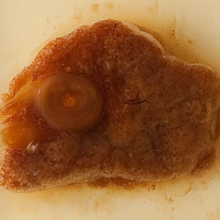
03:31 - Nanotherapeutics: tiny particles reach places other drugs can't access
Nanotherapeutics: tiny particles reach places other drugs can't access
A nanoscale solution to unclogging blocked blood vessels has been revealed by scientists this week.
Dubbed SANTS - shear activated nanotherapeutics - these particles, which are roughly a thousandth of a millimetre across or about same size as a blood platelet, are made by 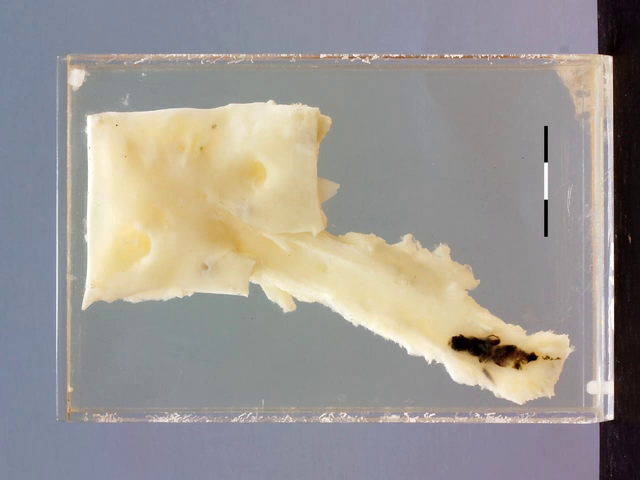 drying a fine spray of the chemical polylactic co glycolic acid (PLGA). This results in loosely-bound aggregates of much tinier particles that attract and bind one another hydrophobically.
drying a fine spray of the chemical polylactic co glycolic acid (PLGA). This results in loosely-bound aggregates of much tinier particles that attract and bind one another hydrophobically.
Critically, these aggregates remain bound together when flowing around the bloodstream under normal conditions. But when they pass through areas of high shear stress or turbulence, caused for instance by a blood clot that has narrowed a blood vessel, the particles break up, dispensing as they do so any chemical cargo that has been coupled to them.
In initial tests using an artificial blood vessel containing a narrowed region simulating a 90% obstruction, Donald Ingber and his team at Harvard showed that, in the region of the blockage where the shear forces on fluid flowing past were more than 10 times normal, this provoked infused SANTs to disaggregate in the region of the obstruction.
Next the team prepared SANT particles that were each loaded with 500,000 molecules of a clot-dissolving protein called tPA (tissue plasminogen activator). These SANTs were able to clear blood clots from abdominal vessels and even dissolve clots obstructing the arteries of the lungs (known as pulmonary emboli) in experimental mice.
Critically, none of the treated animals developed bleeding from any other sites in the body, proving that deployment of the clot-busting treatment was being selectively restricted to those regions where the agent was needed.
This is a significant improvement on current anti-thrombolytic therapies for heart attacks and strokes where clot-dissolving drugs are injected intravenously and can hence affect every tissue, potentially precipitating haemorrhages at other sites including in the brain or intestines.
The next step will be to test the technique on humans. But, as the team point out in their paper in Science this week, before this can occur, a safer way to couple the anti-clot chemicals to the nanoparticles will need to be found. The system they have tested uses a form of molecular velcro called streptavidin-biotin, but this can trigger an immune response, potentially limiting the use of the therapy.

08:09 - The Dusty Disc Disappearance
The Dusty Disc Disappearance
A huge, hot dusty disc around a Sun-like star seems to have vanished before our very eyes, and its disappearance cannot be explained by any current scientific theory.
The star TYC 8241 2652 1 has been observed by a number of telescopes, and a bright infra-red glow indicated the presence of a large amount of warm dust absorbing visible light from the star and re-emitting it in the infra-red range.
Carl Melis and colleagues at the University of California, San Diego report in Nature that this dust seemed to be the result of collisions of rocky objects and fell in the region analogous to where rocky planets formed in our solar system. Estimation of the size of dust grains hinted that this could be a system undergoing an active stage of terrestrial planet formation. This made it an ideal candidate for future observation; as calculation of likely grain size suggested our theories of planetary formation suggest that rocky planets like the Earth will eventually form from these discs of dust and ice.
However, since 2008, the infra-red emission from this star has reduced by a factor of about 30, suggesting that the star is now only host to a meagre amount of far cooler dust. This is an unprecedented observation, changes like this have never been seen or even predicted before, so what could have caused it?
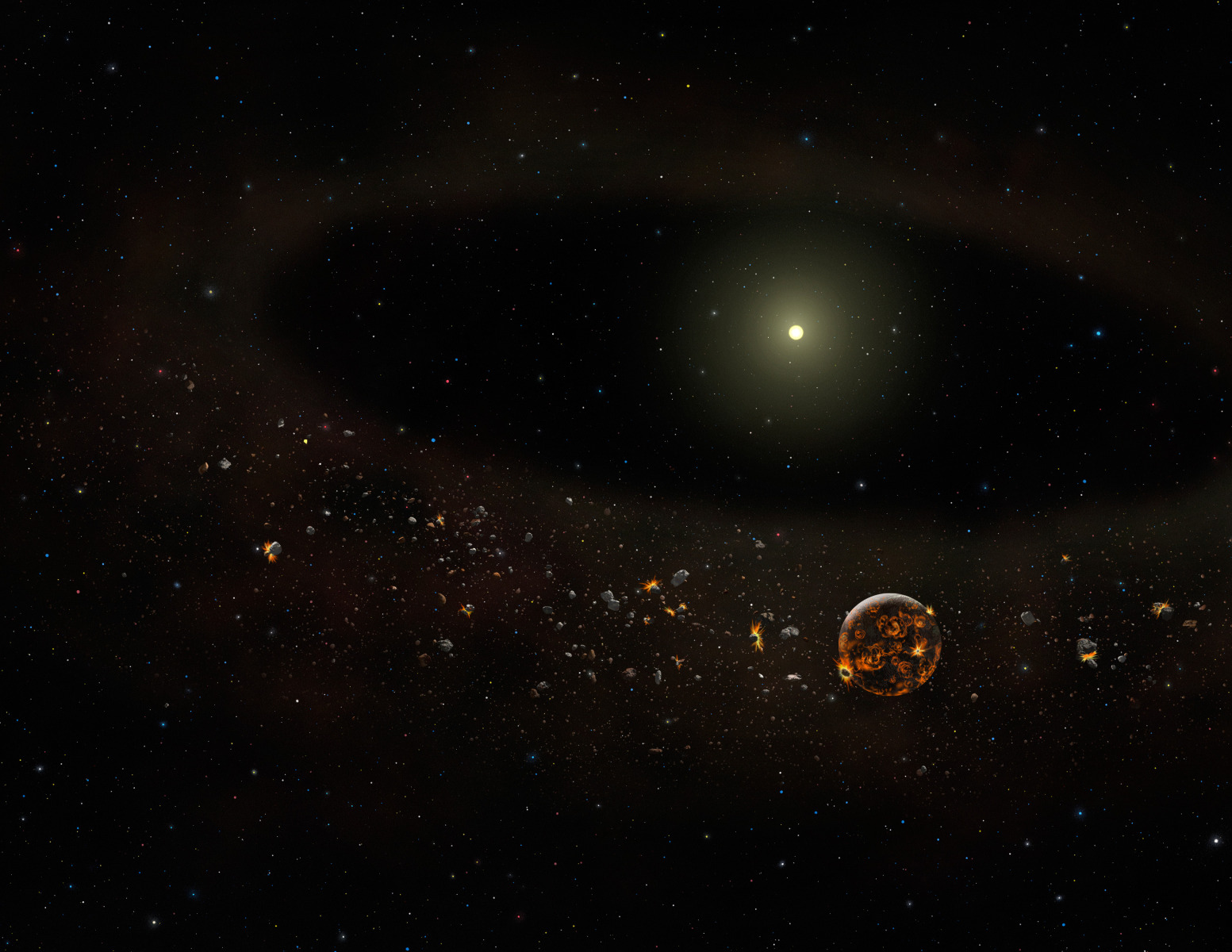 No major changes have occurred in the star in this time, so it's unlikely that a violent stellar event blew the dust away. Models of planet formation predict the loss of dust over at least many thousands of years, as the gravitational field of newly formed planets disturb the dust cloud.
No major changes have occurred in the star in this time, so it's unlikely that a violent stellar event blew the dust away. Models of planet formation predict the loss of dust over at least many thousands of years, as the gravitational field of newly formed planets disturb the dust cloud.
Melis argues that only two hypotheses could fit the results. They are:
- The collisional avalanche hypothesis, where dust grains become gradually smaller through collisions, until they're below a certain threshold and are blown out of the system by radiation pressure from the star.
- Runaway accretion, where gas in the cloud places aerodynamic drag on the dust, causing it to fall in to the star.
However both ideas have problems, so the jury is still out.
Even though we lack a clear explanation for what has happened in this system, it is a unique observation and certain to push our understanding of how planets like the Earth first form.
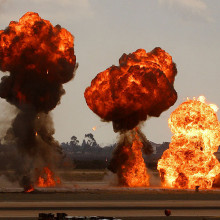
10:53 - Seeing the Supersonic - A new way to look at Explosives
Seeing the Supersonic - A new way to look at Explosives
Profesor Chris Bishop, Microsoft Research Cambridge
Chris - Well, also this week, a unique and explosive demonstration took place at Cambridge University. Explosives play a huge role in our lives from mining the materials that make computers and cars through to excavating tunnels and even controlling avalanches, and of course, lighting up the skies for nice firework displays. Professor Chris Bishop, Chief Research Scientist at Microsoft Research in Cambridge, wanted to highlight the science and technology in explosives rather than just gratuitously blowing things up! That included both humble gun powder and also modern high explosives, and he found a clever new way to show them all off in a talk that he gave earlier this week...
Chris B. - Black powder is really just a mixture. It's a mixture of charcoal, sulphur and so-called saltpetre or potassium nitrate, and it works because the saltpetre, the potassium nitrate acts at a very concentrated source of oxygen. So the carbon in the charcoal and the sulphur, instead of burning in the oxygen from the air, they burn and they built in oxygen in the potassium nitrate and so, it's a much more concentrated form of oxygen, therefore, a much more concentrated and intense combustion.
saltpetre, the potassium nitrate acts at a very concentrated source of oxygen. So the carbon in the charcoal and the sulphur, instead of burning in the oxygen from the air, they burn and they built in oxygen in the potassium nitrate and so, it's a much more concentrated form of oxygen, therefore, a much more concentrated and intense combustion.
Chris - So if I light it, what happens? Does it immediately go bang?
Chris B. - Not quite. What happens is that the ingredients first of all have to melt so that the molecules can come into contact with each other. The potassium nitrate has to start to decompose. It needs a certain amount of heat to get it going and then the chemical reactions can take place. They are essentially reactions of burning so the carbon in the charcoal will burn with oxygen from the potassium nitrate to make carbon dioxide and release energy for example. And we can try it here if you like. I've got 1.5 grams of a good quality commercially gun powder and we'll see what happens when I just light a pile of this gun powder in the open.
- Pffffft! -
Chris - A lot of smoke, but it wasn't a bang.
Chris B. - No bang. So what we have there was a very, very rapid burning. The technical term we give that is deflagration, but it just means burning. What's happening is, imagine a trail of gun powder and setting fire to one end. As the gun powder at one end burns, it generates heat and that heat raises the temperature of the bit of gun powder next to it in the trail. When that gets hot enough, that in turn will combust. And so, it's a process of propagation involving the transfer of heat. It's a relatively slow process. In that case, there's no explosion at all. If we actually want to get a bang, if we want to get a proper explosion, we need to speed things up.
Chris - So when Guy Fawkes shoved tons of gun powder under the houses of parliament - hoping to blow it up - would that not have worked then because it was just a pile of gun powder, rather like you had there.
Chris B. - Well of course it was in a cellar and surrounded by very thick stone walls. So it would've been very well confined. So I think there's little doubt that it would've resulted in an enormous explosion and a complete destruction of the House of Lords, yes.
Chris - So is that how explosives involving gun powder actually work then, you confine the explosion?
Chris B. - That's right. So if you're listening to a fireworks display, and you're listening to all the bangs, it will be gun powder or another type of low explosive that's been confined in order to produce the bang. Again, we can illustrate that here because I've got another sample. It's again 1.5 grams of gun powder. It's exactly the same type as before but this time, I put it into a cardboard tube and bound it up very tightly with tape. So it's very strongly confined and what we'll do is we'll set this off using a little electrical igniter that's buried inside the gun powder.
Chris - I'll should put on some ear defenders.
Chris B. - Okay, ready? Here we go.
- BANG! -
Chris - Okay, my ear is ringing even though I had the ear defenders on. That was exactly the same amount of gun powder we lit that went puff before, but that's the power of confinement. You get that huge bang.
Chris B. - That's right. That's dramatically different, but it's still a very rapid burning. So what's happening is that as the gun powder starts to burn, it releases energy in the form of heat, but that heat is now trapped. It can't just escape. And so, the temperature rises and chemical reactions go faster at higher temperature. So, as the temperature increases, the rate of reaction increases, and so, the rate of heat production increases, this in turn raises the temperature. We have a positive feedback loop leading to a runaway reaction which resulted this explosion. For many years, perhaps a thousand years, that was really the only kind of explosive that people had. And then some time around the middle of the 19th century, people began to discover new kinds of explosives, so-called high explosives.
Chris - Fundamentally, why are they different to gun powder?
Chris B. - The key difference is the way in which they are initiated. So gun 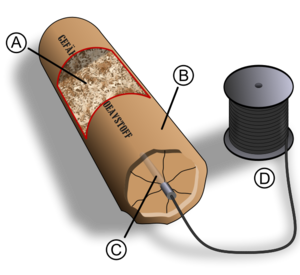 powder undergoes this very rapid burning. High explosives - something like nitro-glycerine or TNT - decomposes by a process called detonation which is a very different physical process and it's very much faster, and very much more powerful, because the oxygen is "built in" to the same molecule. So in a molecule of let's say, nitro-glycerine, you have the carbon and the hydrogen. We also have the oxygen and the nitrogen. That's the most perfect mix you can have between the fuel and oxygen. The carbon can combine very readily with the oxygen to make carbon dioxide. The hydrogen can combine with oxygen to make water. The nitrogen is left over. Nitrogen occurs a lot of explosives. It's very important because nitrogen gas in the air, consists of molecules containing two atoms joined together by one of the strongest bonds in chemistry. So if two atoms of nitrogen get together to make a molecule, they release a lot of energy. That's one of the reasons why high explosives release so much energy.
powder undergoes this very rapid burning. High explosives - something like nitro-glycerine or TNT - decomposes by a process called detonation which is a very different physical process and it's very much faster, and very much more powerful, because the oxygen is "built in" to the same molecule. So in a molecule of let's say, nitro-glycerine, you have the carbon and the hydrogen. We also have the oxygen and the nitrogen. That's the most perfect mix you can have between the fuel and oxygen. The carbon can combine very readily with the oxygen to make carbon dioxide. The hydrogen can combine with oxygen to make water. The nitrogen is left over. Nitrogen occurs a lot of explosives. It's very important because nitrogen gas in the air, consists of molecules containing two atoms joined together by one of the strongest bonds in chemistry. So if two atoms of nitrogen get together to make a molecule, they release a lot of energy. That's one of the reasons why high explosives release so much energy.
Chris - But when we want to make it blow up, what do you need to do for that?
Chris B. - So what we need to do then is to send in a very fast shockwave in order to get the explosive to detonate. So, a detonation is where a shockwave is traveling through the explosive, very much faster than the speed of sound. So this modern high explosive would detonate at the speed of about 8,000 metres per second.
Chris - Gosh! So that shockwave is putting energy into the chemical bonds in the mixture, breaking some of them and making others recombine which then makes a bigger shockwave which then goes on to the next bit of the molecule, and you get a sort of explosive domino effect for want of a better expression.
Chris B. - Yes, exactly right. It's the energy released by the high explosive which sustains that shockwave. If you sent a supersonic shockwave into a block of material, it would rapidly slow down to the speed of sound. But if the materials are high explosives, because it's detonating or releasing energy, that energy just behind the shock front is sustaining the shock front and keeping it going at that supersonic speed. So, one of the things I really want to do in the lecture is to try to give people a sort of visceral feeling for just how fast the detonation occurs. So I came up with the idea of using something called shock tubing. So I've got some shock tubing here and it looks just like a piece of yellow plastic tubing, 3 mm across. It's got a 1 mm diameter hole down in the middle and inside, it contains a very light dusting of high explosive called HMX. This is one of the most powerful explosives known and what I can do now is to demonstrate a shockwave traveling down the tube.
Chris - This little piece of plastic tube is about 20 cm. What are you going to use to detonate it?
Chris B. - What I'm doing is plugging it into an initiator which is essentially an electrical device. It has a couple of buttons. I press the first button which will charge up a capacitor. When I press the second button, it would produce a spark and that's enough to initiate the shockwave.
- BANG!!! -
Chris - I certainly didn't miss that. And you could see the flash go down the tube.
Chris B. - That's right. But of course, at such a high speed, it appears to be essentially instantaneous. So, what we'll be doing in the lecture is to use half a kilometre of shock tubing and this is being wound as you see around the walls of the lecture theatre, so we'll go around the audience 4 or 5 times and then what we're doing is to initiate one end of the shock tubing and about a quarter of a second later, the shockwave will arrive at the other end. What I'm hoping is the audience will actually be able to perceive the delay between the start of the shockwave and the end of the shockwave, and might even be able to see this pulse of light racing around their heads several times.
Chris - Has anyone ever tried to blow up a lecture theatre in this way in the past?
Chris B. - I'm certainly hoping not to blow up the lecture theatre! But I think it's the first time, as far as I know, that somebody has tried to use this sort of method to illustrate the speed of detonation as a live demonstration in a lecture theatre.
Chris - And I'm pleased to say, it definitely worked. People reported seeing the explosion whirl around their heads. So well done to Professor Chris Bishop with a first of its kind demonstration, surrounded the audience with high explosives.
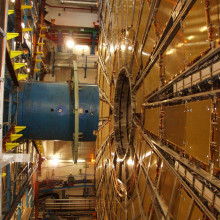
19:03 - Have we found the Higgs Boson?
Have we found the Higgs Boson?
Rolf Heur, CERN; Joe Incandela, CMS Experiment; Jordan Nash, Imperial College London; Emily Nurse, UCL
This week saw scientists at CERN announce the discovery of a Higgs' Boson-like particle at the Large Hadron Collider, or LHC.
The existence of the Higgs' Boson has long been part of the so-called standard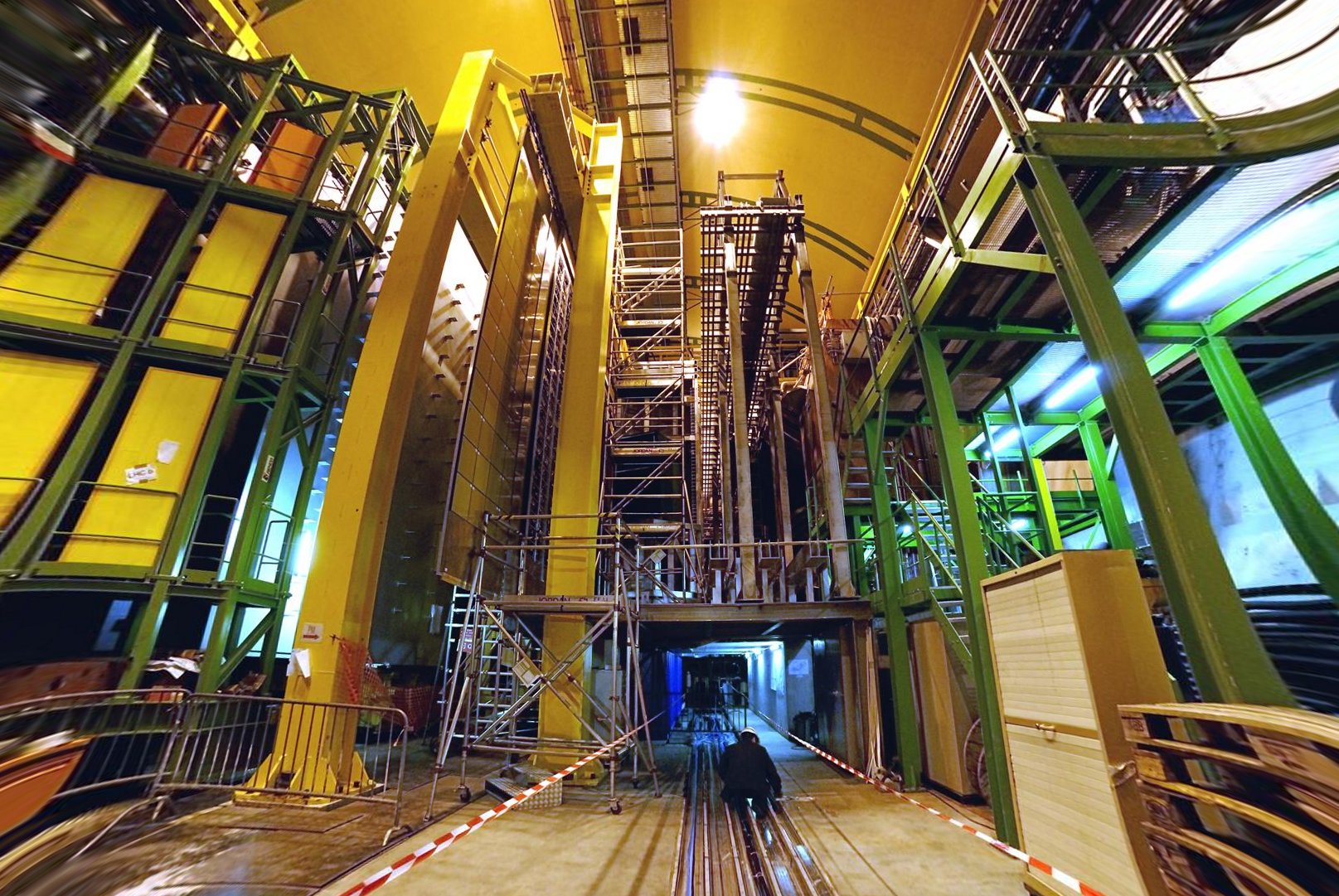 model of particle physics but until now its existence wasn't confirmed.
model of particle physics but until now its existence wasn't confirmed.
CERN Director General Rolf Heur...
Rolf - We have discovered a new particle. A Boson. Most probably a Higgs' Boson, but we have to find out which kind of Higgs' Boson this is, what are its properties, and where do they point to. But at least, we know now that we can soon close part of the chapter of the standard model. We have now found the last missing cornerstone of it. It's the beginning of a long journey to investigate all their properties.
The discovery answers a long-standing question regarding why some of the fundamental particles in the Universe, like protons and neutrons, and the quarks, leptons and bosons that make them up, actually have mass. The Boson was detected by the CMS and ATLAS experiments.
Professor Joe Incandela is from the CMS experiment...
Joe - This boson is a very profound thing that we've found. Okay, this is not like other ordinary particles. We're reaching into the fabric of the universe, at a level we've never done before, and we're on the frontier now. We're on the edge of a new exploration.
Without the presence of Higgs' bosons located within the Higgs' field which permeates space, sub-atomic particles, such as quarks and leptons, would simply move in all directions at great speed rather than clump together to form matter.
In their search, scientists collided billions of protons every second to release large amounts of energy within which the elusive Higgs' boson could form. Only a small percentage of these collisions lead to the formation of these bosons which then decay rapidly into photons. By studying these photons the CERN scientists have been able to deduce the presence of a new fundamental particle.
Professor Jordan Nash, Head of High Energy Physics at Imperial College London explains...
Jordan - So, the two cleanest ways in which we've seen it and which are the most statistical significance are the events where it produces just two very high energy photons. So these are just two particles of light which smash into our detector very cleanly, and the Higgs' Boson always producing from with exactly its mass. So, by looking at these very, very clean signatures, we can spot it. It's very, very indeed to have such a clean signature, but it's one when you get it, you have the quite high certainty that you've actually produced a real particle.
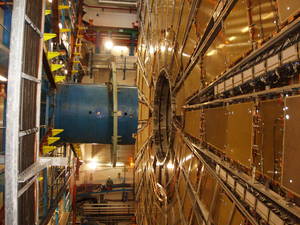 The teams detected particles with energy levels indicating a mass of 125-126 GeV , or 133 times heavier than a proton.
The teams detected particles with energy levels indicating a mass of 125-126 GeV , or 133 times heavier than a proton.
The findings build on preliminary results hinting at the presence of a Higgs-like particle that were announced back in December 2011, but now the CERN teams are more than 99.99994% certain of their finding, a level known as 5 sigma.
Jordan - 5 Sigma is a measurement of how statistically confident we are in our measurement being consistent with a signal as opposed to a background. And so, sigma is a measurement of the relative confidence and it comes from a probability distribution where we can have 1 sigma where you have about 1/3 chance of having gotten a computer signal with a background, 3 sigma says you have about 1 part in a thousand chance of doing that, and 5 sigma says you have less than 1 part of a million confusing a signal with background.
This confirmation would revolutionise the world of fundamental physics as well as our own. Dr. Emily Nurse from University College London is part of the Atlas project.
Emily - It's a very fundamental finding for our understanding of the universe. It's very difficult for us to say what it could possibly lead to. All we can say is that we know that our modern world has completely relied on the previous generations doing fundamental research. For example, computers, television, all the sort of medical equipment that we use - MRI scans - all of these things, they all come from understanding the universe better at a fundamental level and that just eventually then leads on to the technology as you trickle down the line.
Confirming the Higgs Boson's existence will also help scientists recreate what must have happened one ten billionth of a second after the big bang in which mass-less particles gained their mass from the Higgs field to form atoms, ultimately leading to the Universe we see today.










Comments
Add a comment